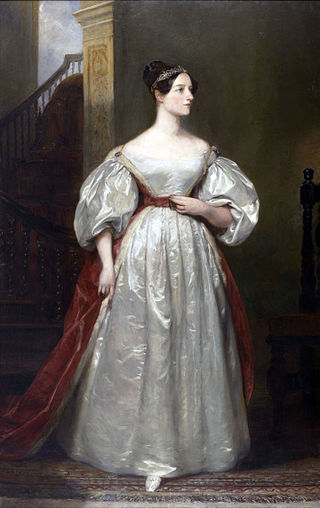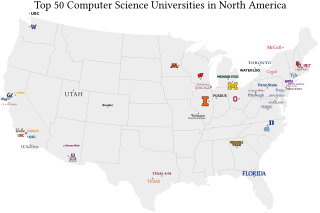Related Research Articles

Anita Borg was an American computer scientist celebrated for advocating for women’s representation and professional advancement in technology. She founded the Institute for Women and Technology and the Grace Hopper Celebration of Women in Computing.

Women in computing were among the first programmers in the early 20th century, and contributed substantially to the industry. As technology and practices altered, the role of women as programmers has changed, and the recorded history of the field has downplayed their achievements. Since the 18th century, women have developed scientific computations, including Nicole-Reine Lepaute's prediction of Halley's Comet, and Maria Mitchell's computation of the motion of Venus.

The presence of women in science spans the earliest times of the history of science wherein they have made significant contributions. Historians with an interest in gender and science have researched the scientific endeavors and accomplishments of women, the barriers they have faced, and the strategies implemented to have their work peer-reviewed and accepted in major scientific journals and other publications. The historical, critical, and sociological study of these issues has become an academic discipline in its own right.

Science, technology, engineering, and mathematics (STEM) is an umbrella term used to group together the distinct but related technical disciplines of science, technology, engineering, and mathematics. The term is typically used in the context of education policy or curriculum choices in schools. It has implications for workforce development, national security concerns, and immigration policy, with regard to admitting foreign students and tech workers.
The Association for Women in Science (AWIS) was founded in 1971 at the annual Federation of American Societies for Experimental Biology (FASEB) meeting. The organization aims to combat job discrimination, lower pay, and professional isolation. The main issue areas that the modern Association addresses are fair compensation, work-life integration, attrition, and professional development.

Computer science education or computing education is the field of teaching and learning the discipline of computer science, and computational thinking. The field of computer science education encompasses a wide range of topics, from basic programming skills to advanced algorithm design and data analysis. It is a rapidly growing field that is essential to preparing students for careers in the technology industry and other fields that require computational skills.

AnitaB.org is a global nonprofit organization based in Belmont, California. Founded by computer scientists Anita Borg and Telle Whitney, the institute's primary aim is to recruit, retain, and advance women in technology.

Women are often under-represented in the academic and professional fields of engineering; however, many women have contributed to the diverse fields of engineering historically and currently. A number of organizations and programs have been created to understand and overcome this tradition of gender disparity. Some have decried this gender gap, saying that it indicates the absence of potential talent. Though the gender gap as a whole is narrowing, there is still a growing gap with minority women compared to their white counterparts. Gender stereotypes, low rates of female engineering students, and engineering culture are factors that contribute to the current situation where men dominate in fields relating to engineering sciences.

Many scholars and policymakers have noted that the fields of science, technology, engineering, and mathematics (STEM) have remained predominantly male with historically low participation among women since the origins of these fields in the 18th century during the Age of Enlightenment.
Systers, founded by Anita Borg, is an international electronic mailing list for technical women in computing. The Syster community strives to increase the number of women in computer science and improve work environments for women. The mailing list has operated since 1987, making it the oldest of its kind for women in computer science. It is likely the largest email community of women in computing.
Many in Canada share concerns about the current and future roles of women in computing, especially as these occupations increase in importance. As in many nations where computing and information technology are large industries, women in Canada have historically faced underrepresentation in education and industry. As a result, some Canadian women pursuing careers in these fields have had a lack of role models and faced sexism. There are many institutions and initiatives in Canada, however, which seek to increase representation for women in computing fields, as well as the fields of natural science and engineering in general.

This is a timeline of women in computing. It covers the time when women worked as "human computers" and then as programmers of physical computers. Eventually, women programmers went on to write software, develop Internet technologies and other types of programming. Women have also been involved in computer science, various related types of engineering and computer hardware.
African-American women in computer science were among early pioneers in computing in the United States, and there are notable African-American women working in computer science.
Robert B. Schnabel is an American computer scientist. He was executive director and CEO of the Association for Computing Machinery (ACM) from November 1, 2015 to 2017. He is now professor and external chair of computer science at University of Colorado Boulder.

Diversity in computing refers to the representation and inclusion of underrepresented groups, such as women, people of color, individuals with disabilities, and LGBTQ+ individuals, in the field of computing. The computing sector, like other STEM fields, lacks diversity in the United States.
An underrepresented group describes a subset of a population that holds a smaller percentage within a significant subgroup than the subset holds in the general population. Specific characteristics of an underrepresented group vary depending on the subgroup being considered.

Gender disparity in computing concerns the disparity between the number of men in the field of computing in relation to the lack of women in the field. Originally, computing was seen as a female occupation. As the field evolved, so too did the demographics, and the gender gap shifted from female dominated to male dominated. The believed need for more diversity and an equal gender gap has led to public policy debates regarding gender equality. Many organizations have sought to create initiatives to bring more women into the field of computing.
According to the National Science Foundation (NSF), women and racial minorities are underrepresented in science, technology, engineering, and mathematics (STEM). Scholars, governments, and scientific organizations from around the world have noted a variety of explanations contributing to this lack of racial diversity, including higher levels of discrimination, implicit bias, microaggressions, chilly climate, lack of role models and mentors, and less academic preparation.